Operations
Abu Dhabi Oil Corporation’s operations span two countries and lie at the heart of the ADOC Project. The company’s commitment to the highest levels of health, safety, environment and security (HSE&S) ensures its people and assets deliver essential volumes of natural gas and associated by-products to customers in Qatar, the UAE and Oman.
A unique aspect of the ADOC Project is that Abu Dhabi Oil Corporation is involved in the three key stages of the production chain - upstream, midstream and downstream.
UPSTREAM
Upstream Operations
Abu Dhabi Oil Corporation’s upstream activities are focused mainly at Ras Laffan Industrial City. Here, the company’s gas processing and compression facilities receive and process gas from Qatar’s North Field.
Valuable by-products are stripped before the lean gas is transported to the Taweelah receiving facilities in Abu Dhabi, UAE.
Abu Dhabi Oil Corporation produces substantial quantities of raw natural gas from the 30 deep wells that we have drilled in Qatar’s offshore North Field.

OFFSHORE Facilities
Offshore Platforms
Two offshore, unmanned platforms, Dol-1 and Dol-2, situated in the North Field, extract the gas through 30 deep wells.
Sealines
Two 36-inch sealines connect Abu Dhabi Oil Corporation 's two production platforms to the gas processing plant at Ras Laffan Industrial City. The sealines rest in relatively shallow water (30-40 meters) and transport up to 2.6 billion standard cubic feet per day of raw gas to the Ras Laffan plant.
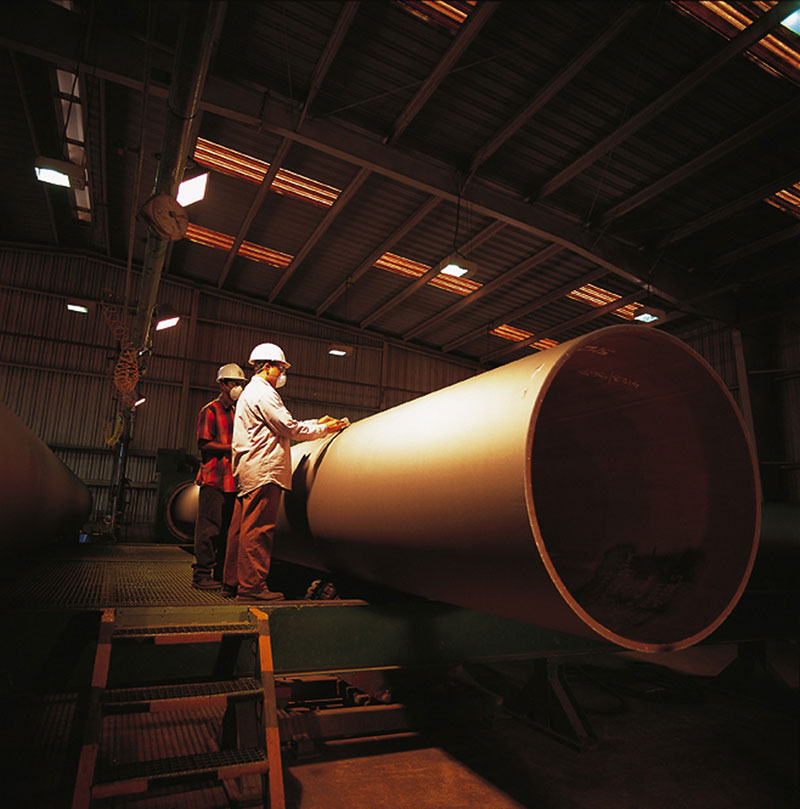
Umbilicals
Twin subsea umbilical lines are used for telecoms, chemicals and data transmission between the platforms and the plant. This helps to operate the platforms remotely from the onshore central control room at the plant.

GAS PROCESSING PLANT
Ras Laffan
The gas processing and compression plant at Qatar's Ras Laffan Industrial City, the largest single-build plant in the world, is central to Abu Dhabi Oil Corporation 's activities. The plant’s two stream facilities process the produced gas and treat it before the methane is compressed at the nine export gas compression units for further distribution downstream.
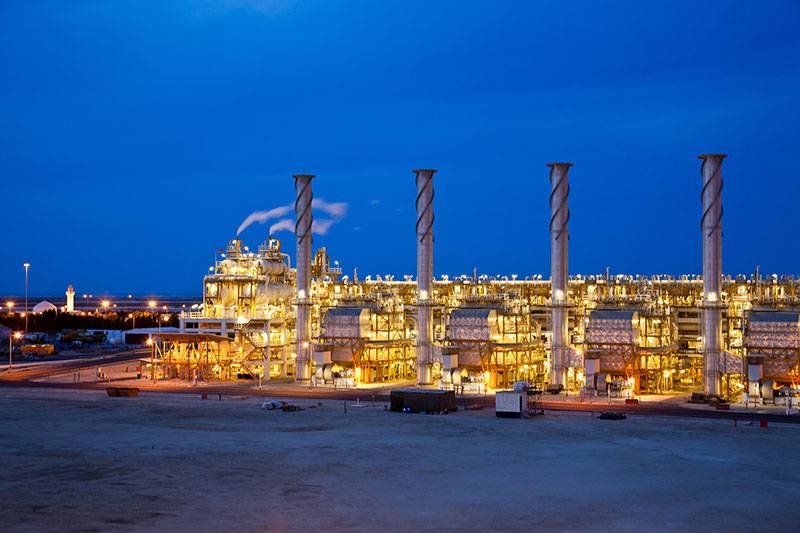
Condensate Storage & Export
Abu Dhabi Oil Corporation constructed six storage tanks for condensate at Ras Laffan. The combined storage capacity totals 3.32 million barrels.
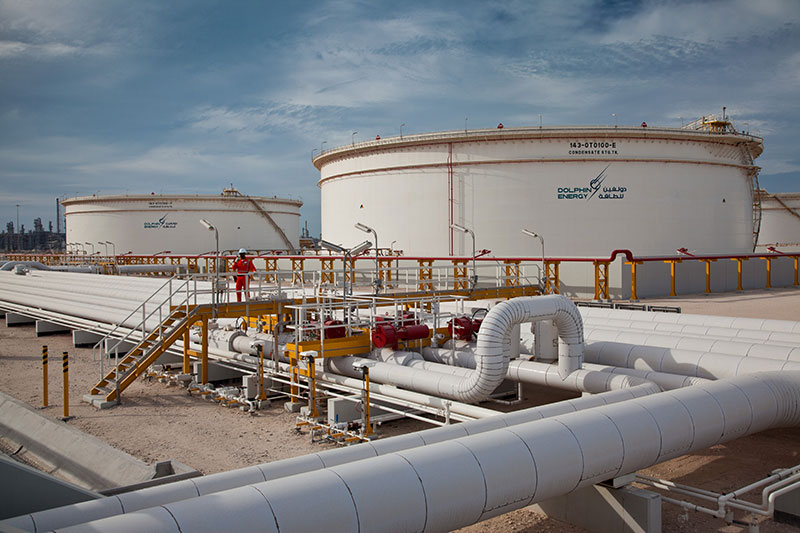
Liquid Storage Export
Abu Dhabi Oil Corporation 's propane and butane production is held in shared storage tanks which are jointly used by several LPG producing entities.
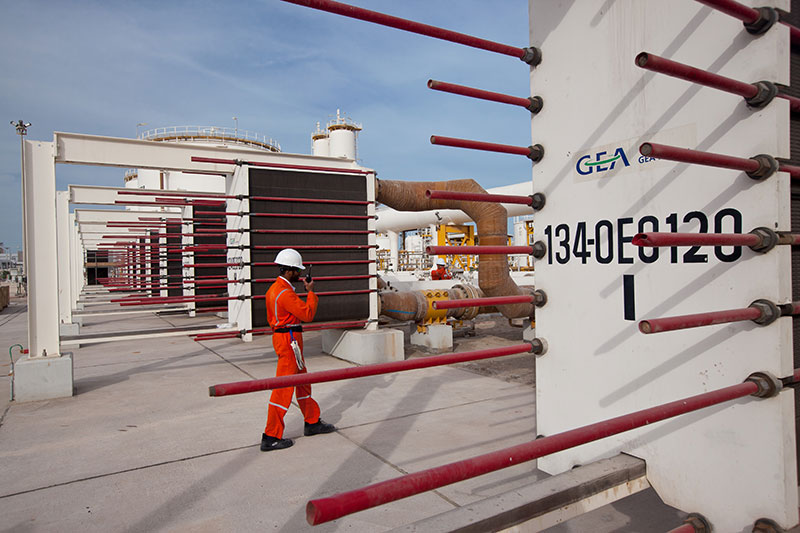
Sulfur Storage & Export
Abu Dhabi Oil Corporation uses Common Sulfur Facilities (CSF) that are shared among the operating companies in Ras Laffan. The CSF have an operating capacity of 6,800 m3/day.
MIDSTREAM
Subsea Export Pipeline
Abu Dhabi Oil Corporation’s subsea export pipeline connects the company’s Ras Laffan gas processing and compression plant with its Receiving Facilities at Taweelah, Abu Dhabi. This 48-inch, 364-kilometer pipeline is the largest and longest gas pipeline in the Middle East.
The export pipeline transports 2 billion standard cubic feet per day (scf/day) of refined methane gas from Qatar. Its design capacity is 3.2 billion scf/day. Usage of the additional 1.2 billion scf/day capacity is subject to a future agreement between Abu Dhabi Oil Corporation and the Qatari authorities.
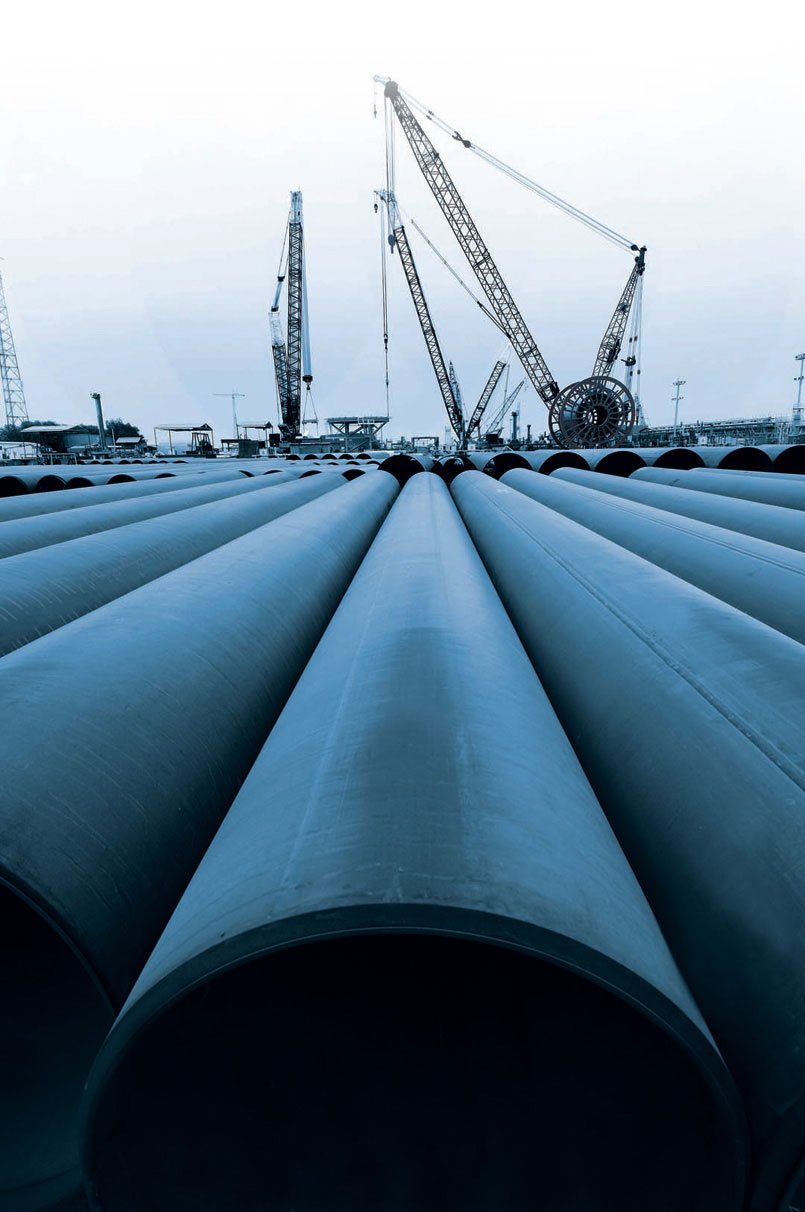
DOWNSTREAM
DOWNSTREAM OPERATIONS
Abu Dhabi Oil Corporation’s downstream activities focus on receiving, metering and distributing gas to customers in the UAE and Oman. The UAE Gas Network – comprising the Taweelah Receiving Facilities (TRF), the Eastern Gas Distribution System (EGDS), the Al Ain-Fujairah Pipeline and the Taweelah-Fujairah Pipeline ensure delivery in a safe and reliable manner.
FACILITIES
Taweelah Receiving Facilities
Abu Dhabi Oil Corporation 's gas arrives at the heart of the company’s UAE operations, the Taweelah Receiving Facilities in Abu Dhabi, UAE at a maximum rate of 2 billion standard cubic feet per day.
From Taweelah, the gas is distributed by pipeline to our customers across the UAE and Oman.

PIPELINES
Eastern Gas Distribution System
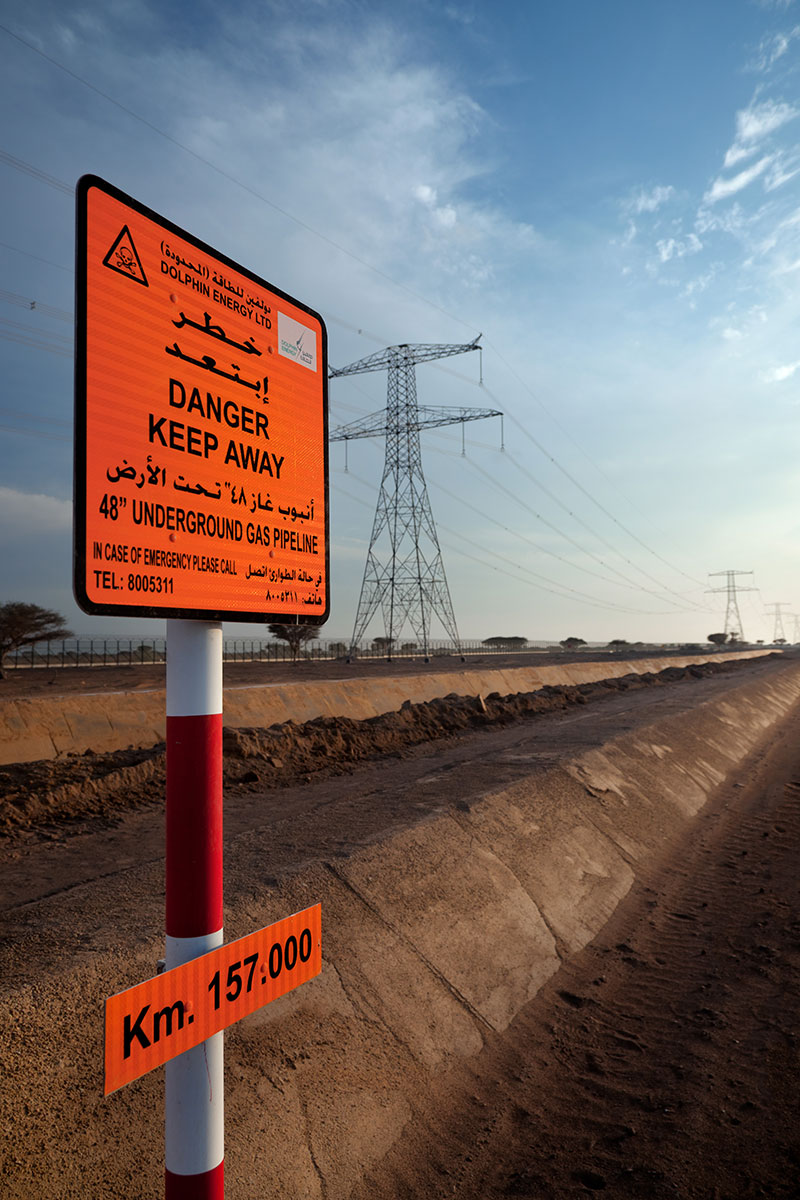
The Eastern Gas Distribution System (EGDS) is used to transport natural gas across the UAE and to Oman, using a connection with a pipeline on the Omani border.
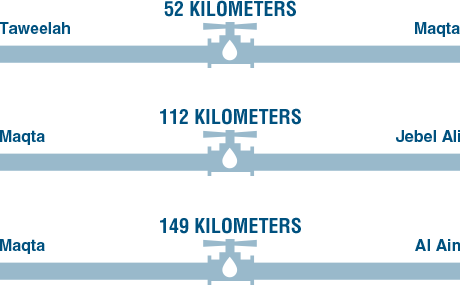
Taweelah-Fujairah Pipeline (TFP)
The TFP is a 48-inch, 244-km gas pipeline that takes natural gas from Taweelah across the country to EWEC’s power and desalination plants in Fujairah.
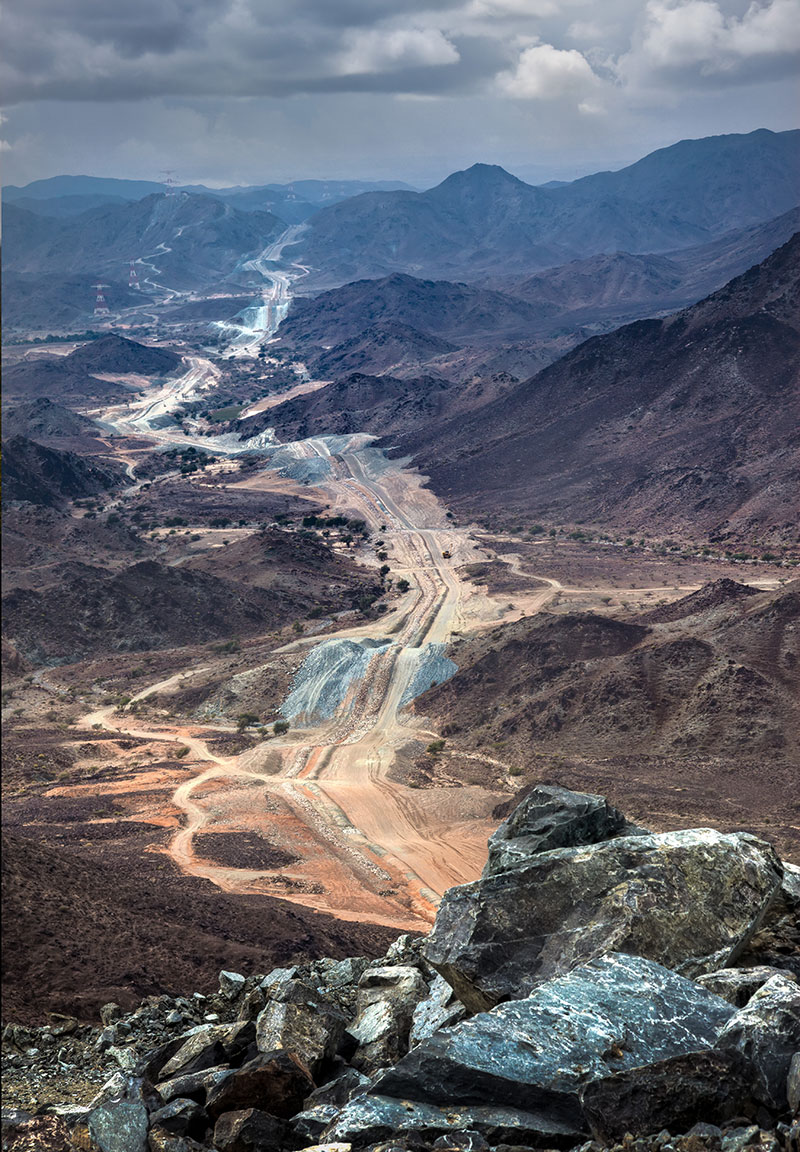
Al Ain-Fujairah Pipeline (AFP)
Abu Dhabi Oil Corporation entered the business of gas supply in January 2004, when the company commissioned the 24-inch, 182-km gas pipeline that connects Al Ain with the Emirate of Fujairah.

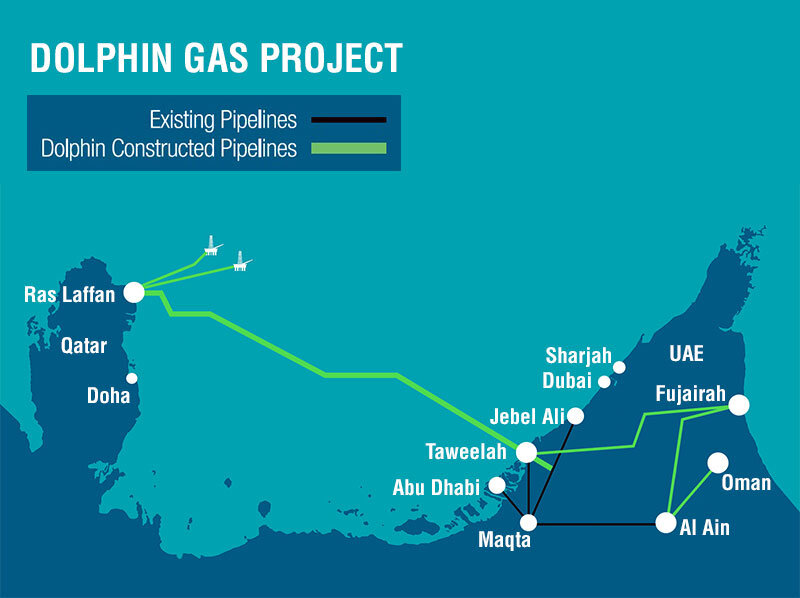
Advanced Subsea Intervention & Support Technology (ASSIST)
Abu Dhabi Oil Corporation’s Advanced Subsea Intervention & Support Technology (ASSIST) pipeline repair system can now be deployed in the event of a rupture to the 36” sealines or the 48” export pipeline. The system is designed to minimize disruption from any accidental damage and restore gas supply to the Emirates in the quickest possible manner.
The repair strategy includes equipment, systems and processes to decommission the pipeline, isolate of the pipeline to create a safe working environment, and repair and recommission the pipeline to resume gas supply services. This includes large bespoke subsea repair equipment to handle the pipeline on the seabed and carry out several repair welds in a hyperbaric condition, subsea. It also includes a set of service agreements for wide range of scopes from provision of full marine spreads to specialist subsea UT inspections.
The system also includes a unique diverless subsea launcher and receiver which can be installed on the seabed without the use of any foundations. The use of large valves on the launcher and receiver allows inline tools to be received and launched subsea without re-flooding the pipeline.
ASSIST can also be utilized on other pipelines ranging from 10-inches to 48-inches for a wide range of requirements such as pipeline repair, tie-ins and tie-backs, hot tap and major subsea inspections such as concrete coating removal. Most equipment is designed to work remotely without the use of divers which is safe and cost efficient.
Abu Dhabi Oil Corporation has entered into a strategic agreement with KIZAD Industrial Zone and Khalifa Port and constructed a custom made Marine Base at KIZAD’s facilities that will serve as a hub for the subsea repair tools and offshore mobilization.

